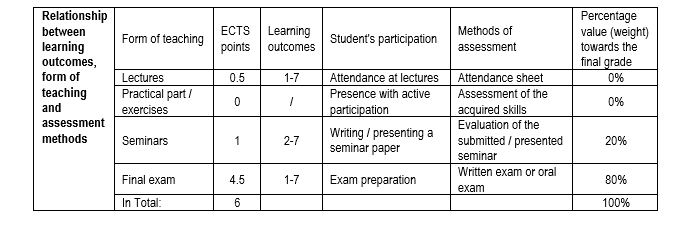Acquiring knowledge necessary for monitoring and learning course content of specific professional disciplines and clinical discipline.
Cardiology Diagnostic methodsincardiology;anamnesisand physical check-up,non-invasive and invasive methods;electrocardiography,loadtesting;procedures of identification andinterventionwith heart failure, rheumatic fever, features; acquired heart diseases, inborn heart diseases and inflammatory heart diseases, ischemic heart diseases, disorders of the heart rhythm, cardiac conduction defect, diseases of the aorta and peripheral arteries, artery hypertension, atherosclerosis; patient’s features after cardio-surgical procedures and procedures of cardiopulmonaryresuscitation.
Pulmonology Diagnostic methodsinpulmonology; anamnesis andphysical check-up. Chronic and obstructive lung diseases,pulmonary tuberculosis,sarcoidosis,pneumonia,bronchusand lung cancer,urgentconditions in pulmonology, procedures of pharmacotherapy in pulmonology.
Rheumatology Diagnostic methodsinrheumatology, features of autoimmune diseases and system diseases of connective tissue,rheumatoidarthritis,juvenilechronicarthritis,psoriatic arthritis,Reiter’s syndrome (reactive arthritis), ankylosing spondylitis, degenerative joint disease, degenerative spine disease, extra-articular rheumatism, metabolic disease of bones and joints.
Oncology,Tumour diseases;risk factors for disease to arise,epidemiologyand tumour classification, prevention and tumour treatment; prevention and treatment of consequences after aggressive tumour treatment on patient’s life functions andquality.Features of tumours for adults and children.
Obavezna literatura:
- Vrhovac B, Jakšić B, Reiner Ž, Vucelić B. Interna medicina. Zagreb: Naklada Ljevak; 2008. (izabrana poglavlja)
- Včev A, Burton N: Objektivno strukturirano kliničko ispitivanje – OSKI. 1. hrv. izd. Osijek: Medicinski fakultet Osijek; 2015.
- Vrdoljak, E, Krajina Z, Šamija M. Klinička onkologija. Zagr
Upon completion of this course, students will be able to:
1. assess main symptoms and signs of the most significant diseases of internal organs and organ systems;
2. determine the pathophysiological processes and mechanisms of internal organs and organ systems diseases;
3. compare the clinical picture of internal medicine disease and manifestations in the musculoskeletal system;
4. select differential diagnostic options based on clinical presenation;
5. recommend diagnostic procedures and possibilities of conservative and operative treatment;
6. assess the impact of internal comorbidities on the implementation of kinesitherapy intervention;
7. recommend optimal therapy and rehabilitation program considering internal comorbidities and the risk of developing medical emergencies.



